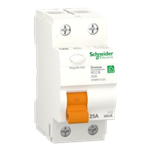Complete Guide to Home Electrical Installation According to PUIL Standards
DEFINITION OF PUIL
PUIL (General Requirements for Electrical Installations) is a standard established in Indonesia to ensure safety and efficiency in electrical installation. These regulations refer to national and international regulations to prevent electrical hazards such as short circuits, fires, and electric shocks.
CABLE TYPE SELECTION
In residential electrical installations, PUIL regulates the types of cables that may be used, including:
- NYA (Cu/PVC) 450/750V: A single-core copper cable with PVC insulation, used for installations in pipes or enclosed channels.

- NYM (Cu/PVC/PVC) 300/500V: Cable with a single conductor containing more than one conductor core, coated with PVC insulation and sheathing. NYM is more resistant to environmental conditions than NYA.

- NYY (Cu/PVC/PVC) 0.6/1kV: Single-conductor cable with more than one conductor core and extra protection, suitable for installation underground or in humid environments.

- NYFGBY (Cu/PVC/SFA/PVC) 0.6/1kV: Cable with additional mechanical protection for underground installation.

ELECTRICAL WIRING INSTALLATION REQUIREMENTS
1. Cable Size
- The main cable connecting the electrical panel to the distribution must be adjusted to the power capacity of the house.
- If there is a need for switches and lighting, cables with a size of 1.5 mm² can be used.
- Meanwhile, for power outlets, cables with a size of 2.5 mm² can be used or adjusted to the load requirements.
2. Cable Installation
A. Cable Installation Inside Pipes orDucts
- Cables installed in pipes must have sufficient space for air circulation and must not exceed 40% of the pipe’s capacity.
- Use PVC pipes or metal conduit pipes as needed, adjusted to the environmental conditions.
B. Cable Installation Inside Walls or Ceilings
- Cables must be protected with pipes or ducts to prevent mechanical damage from the surrounding environment or external interference from rodents.
- Installation inside walls must use neatly embedded pipes that do not interfere with the building structure.
C. Cable Installation in the Ground
- Use NYY or NYFGbY cables that are resistant to moisture and pressure, tailored to potential disturbances in the surrounding area.
- Cables must be buried at a minimum depth of 60 cm and covered with a layer of sand, along with mechanical protection such as paving blocks or protective pipes.
3. Safe Distance and Protection
- Cables embedded in walls must have a minimum depth of 3 cm.
- Cables buried in the ground must have additional protection such as PVC pipes or mechanical protection.
- The distance between electrical cables and water or gas pipes must be at least 10 cm to prevent the risk of short circuits.
4. Grounding System
- Every house must have a grounding system to avoid electric shock.
- Grounding requirements can use NYA Yellow-Green cable or Bare Copper Conductor connected to a buried electrode. The minimum cable size used is 4 mm² or adjusted to requirements.


5. Use of Electrical Safety Devices
- Use MCB (Miniature Circuit Breaker) as protection against overcurrent and short circuits.

- Use ELCB (Earth Leakage Circuit Breaker) for protection against electrical leakage.

6. Marking and Identification of Cables
- Cables must be labeled or color-coded according to their function:
- Phase: Black, Brown, Gray.
- Neutral: Blue
- Grounding: Green-yellow
7. Cable Connection
- Use appropriate terminals or connections, such as connector blocks or solder.
- Connections must be made in an easily accessible junction box.
8. Safety and Inspection
- Each cable must be checked with a multimeter or Insulation Resistance Test to ensure there are no disturbances in the cable insulation.
- Cable safety must be ensured using an MCB (Miniature Circuit Breaker) appropriate for the power being used.
INSPECTION AND CERTIFICATION
- Residential electrical installations must be inspected by a certified professional before use.
- Regular inspections are recommended to ensure that cables and electrical devices remain safe.
If you follow PUIL regulations, your home electrical installation will function safely and efficiently, reducing the risk of electrical accidents. All installations must be carried out by certified electricians in accordance with PUIL standards to ensure the safety and reliability of the electrical system. Use high-quality electrical cables from Wilson Cables, the right choice for your building, to support installations that comply with standards.

![]()

![]()
![]()
![]()
![]()

